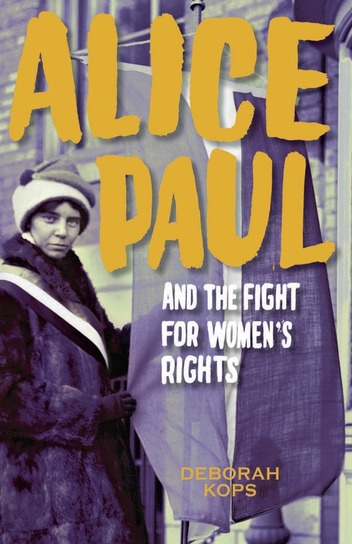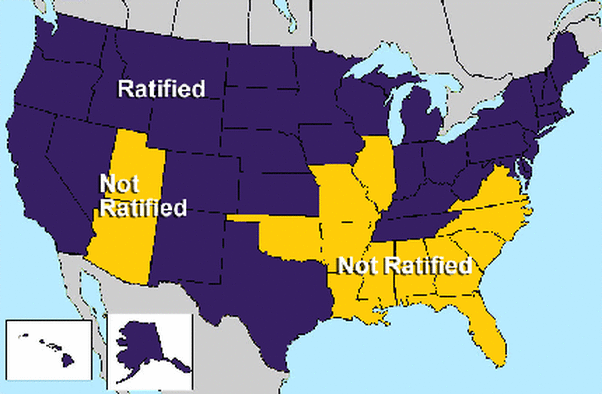|
Have women always been warriors? And why does it matter anyway? That's the question we take up today with the help of a "brilliant storyteller." That's what reviews say about Pamela D. Toler, PhD and her recent book Women Warriors: An Unexpected History. From the time she was young, Pamela sought out stories of "smart/courageous/quirky/energetic girl protagonists and the few biographies of women that reached [her] elementary school library." Today the author has a PhD in history, and is praised for her rigorous research and accessible writing. Her books are for nerdy or inquisitive teens and thinking adults. (That's you, right?)
When I was a little girl, I loved to read about pioneers on the Oregon Trail. I came to identify with qualities I perceived in people who made that difficult journey. They were bold, grasping freedom and opportunity. They were tough, pitting themselves against nature, gambling on their physical strength and mental acuity, and testing their will to survive. When I worried about what had happened to the Native peoples whom the pioneers displaced, I was given a vague answer, "It's too bad what happened, but it's progress and you can't stop progress." From my perspective now, I would not call westward expansion human progress. And my focus now is on Indigenous people's amazing will to survive. I'm identifying myself with the qualities of compassion, good listening skills and the ability to see history more clearly.
As a writer and lover of books, I'm also working to amplify voices that have long been ignored.
Please welcome author Winifred Conkling here to tell you about the biography she's written entitled Ms. Gloria Steinem, A Life. Reviewers call it insightful and well-researched. From Booklist, "Readers will come away with...
 Author Kathryn Atwood Author Kathryn Atwood I am traveling this week, so I've invited Author Kathryn Atwood to tell you about her book Women Heroes of World War II: The Pacific Theater. She shares the heartbreaking story of three women who, like Louis Zamperini, whose story is told in Unbroken, endured through hardship and torture to survive WWII. Thank you, Kathryn. My personal images and interest in WWII—as well as a previous book I'd written--all focused on the European conflict. My Army Air Corps dad and his three brothers had all flown in the European Theater and while I was in high school The Hiding Place [the story of Corrie ten Boom] had come to theaters. So the two basic images implanted in my mind regarding WWII—tall, dashing, Dutch-American flyboys and a middle-aged Dutch woman who defied the Nazis by hiding Jews—had, apart from Pearl Harbor, made me consider WWII as a primarily European conflict and had compartmentalized the war in my brain under the category of courage, not necessarily endurance.  Reading the memoirs and biographies of the women featured in what would become Women Heroes of World War II: The Pacific Theater, I came to understand that endurance was precisely what the Pacific War had been for millions of people; not only for American troops fighting an enemy who refused to surrender, but for the civilians unfortunate enough to find themselves in Japanese-controlled territory. Three women featured in my book perhaps fit more precisely into the Unbroken category because they, like Louis Zamperini, endured intentional physical torture. Elizabeth Choy, Sybil Kathigasu, and Claire Phillips all suffered at the hands of the Kempetai, the Japanese military police, who, like the German Gestapo, were tasked with weeding out resistance activities.  Elizabeth Choy Elizabeth Choy Elizabeth Choy found herself in their hands inadvertently after she had unknowingly passed radio parts to Allied prisoners in Singapore. The Japanese were convinced she was part of a larger plot so to obtain the desired confession, they tortured her nearly to death. Deeply religious, she refused to lie, even to save her life.  Sybil Kathigasu, on the other hand, was an active member of the Malayan resistance: she provided medical care to local guerilla fighters. She was caught and taken into Kempeitai custody where one officer named Eko Yoshimura took a special interest in breaking her. He nearly destroyed Kathigasu's body but her will remained intact and she never divulged the information Yoshimura sought. Claire Phillips, an American member of the Manila resistance, charmed and chatted up Japanese officers in her nightclub, gleaning precious tidbits of intel, then used her earnings to sneak food to starving American POWs. Claire was caught, interrogated, tortured, and starved by the Kempeitai for nearly nine months without betraying anyone.
Conversion to Christianity saved Zamperini from his dark, downward spiral but not all American Pacific War POWs fared as well: they suffered far more PTS, alcoholism, premature death, suicide, and divorce in comparison with their counterparts released from German POW camps. I found a similar trend among the women whose stories I encountered while writing my book. Sybil Kathigasu died three years after the war from complications arising from her beatings. Claire Phillips died in 1960 from alcoholism-related meningitis. All war creates suffering in the moment and in the aftermath. The Pacific War seemed to be a conflict in which this was intensely true for reasons I’m still sorting out. But whatever the reason, the people who stood up to Japanese fascism deserve respect and remembrance just as much as those who defied the Nazis. Louie Zamperini once dismissed his war hero status, claiming that mere survival does not make one a hero. Millions of his fans--myself included--profoundly disagree. Surviving the Pacific War was more than enough to earn the designation. Thanks you, Kathryn. Learn more about Author Kathryn Atwood and her books here...
Imagine devoting your entire adult life to a cause, living more than 90-years, and dying with unfinished business. Alice Paul believed that men and women should be equal partners in society, and she was behind most 20th Century efforts for women's rights in the United States, including women's right to vote. Now, close to 100 years after Alice Paul started the fight for an Equal Rights Amendment, women in the U.S. are still second class citizens under the law. (See video below) 
In October 1917, Alice Paul and three other suffragists were arrested for protesting at the west gate of the White House. She did not go quietly, believing that equal rights for women would not be gained without extreme measures.
Confined behind bars, her only power was refusing to eat. She had resorted to hunger strikes before when arrested in England. When the forcible feeding was ordered I was taken from my bed, carried to another room and forced into a chair, bound with sheets and sat upon bodily by a fat murderer, whose duty it was to keep me still. Then the prison doctor, assisted by two woman attendants, placed a rubber tube up my nostrils and pumped liquid food through it into the stomach. Twice a day for a month, from November 1 to December 1, this was done. ~Alice Paul Talks, Philadelphia Tribune, January 1910. 
A new biography of Alice Paul brings the story of this less-well-known suffragist to teenagers in ALICE PAUL AND THE FIGHT FOR WOMEN'S RIGHTS.
Author Deborah Kops agreed to talk with me about Alice's passion and determination. Deborah Kops: I am awed by Paul’s courage and her willingness to risk her life to help women win the vote. Her health was fragile, and she jeopardized it on a regular basis when she was young. Paul went on her longest hunger strike, which lasted three weeks, in 1917, when she was in jail in Washington, D.C. (she went on three hunger strikes years before in the UK). For most of that time, she was force fed, which is very painful. A hunger strike was her only means of fighting her imprisonment and reminding the public that women wanted the ballot. She and the other Woman’s Party members who went without food (more than twenty) got plenty of coverage in newspapers around the country, which embarrassed Woodrow Wilson. Less than two months after Paul’s release, Wilson finally announced his support for the woman suffrage amendment. The amendment was ratified August 18, 1920.
Above: Fellow Suffragists protesting Alice Paul's arrest and incarceration for picketing the White House. Photo courtesy of the Historic National Women's Party, Sewell-Belmont House and Museum, Washington D.C. 
Deborah, this book seems personal to you. (Author pictured below)
I became a feminist during the women’s movement of the late sixties and early seventies, which historians call the second wave. And I assumed that the Equal Rights Amendment, which we were fighting for, was written in the sixties. I learned that the amendment was Alice Paul’s idea and that she wrote it in 1923! A century later, when Hillary Clinton made her acceptance speech as the first woman nominated by a major political party for the presidency, I was very touched to see her wearing white, the color that suffragists often wore beneath their sashes. When I joined the Women’s March in Boston in January, I was very proud to wear a sash with the National Woman’s Party colors—purple, white, and gold—over my jacket. Thank you for taking time for this interview, Deborah, and for writing about this courageous woman! You can see all of Deborah Kops books at her website here, including The Great Molasses Flood: Boston, 1919 which Kirkus Reviews calls A fascinating account of a truly bizarre disaster. Back to the Equal Rights Amendment. If you know anyone living in the states colored yellow below...ask them if they know their state has not ratified the ERA. Then check out the video below (it's less than two minutes long). Feel free to forward this newsletter. Thanks www.equalrightsamendment.org for the map. Just three weeks ago Nevada became the 36th state to ratify the ERA (45 years to the day after Congress passed it). This year ERA bills have been introduced in the legislatures of Arizona, Florida, Illinois, North Carolina, Utah, and Virginia. |
I'm fascinated to discover little-known history, stories of people and events that provide a new perspective on why and how things happened, new voices that haven't been heard, insight into how the past brought us here today, and how it might guide us to a better future.
I also post here about my books and feature other authors and their books on compelling and important historical topics. Occasionally, I share what makes me happy, pictures of my garden, recipes I've made, events I've attended, people I've met. I'm always happy to hear from readers in the blog comments, by email or social media. Archives
September 2023
Categories
All
|






